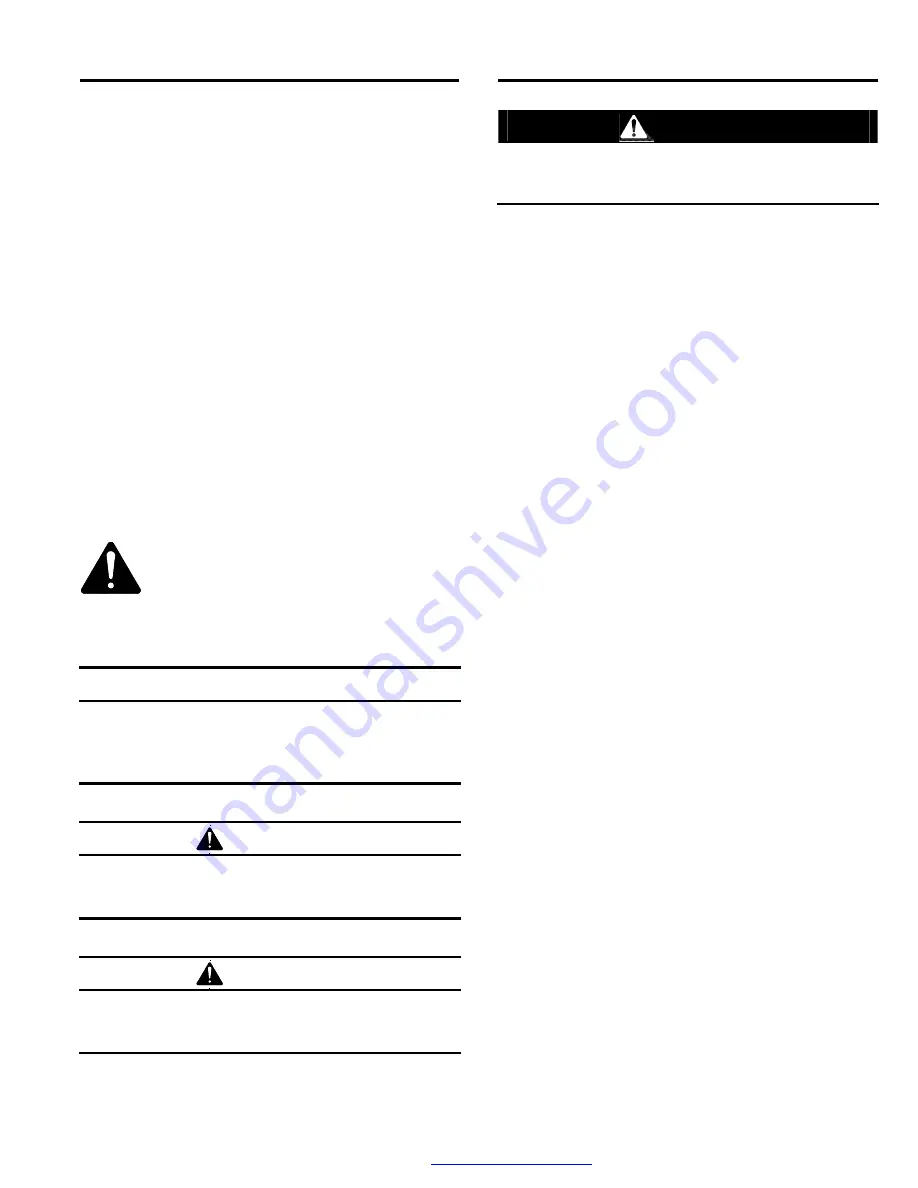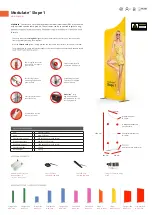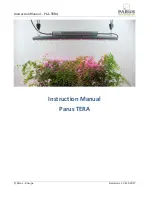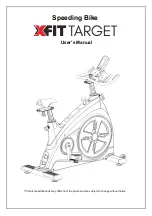
MEDIA RECLAIMER / SEPARATOR
Page 1
© 2005 CLEMCO INDUSTRIES CORP.
•
www.clemcoindustries.com
•
Manual No. 23438
•
Rev. E
1.0 INTRODUCTION
1.1
Scope of Manual
1.1.1
These instructions cover the installation, opera-
tion, maintenance, troubleshooting, and replacement
parts for 900 cfm and larger reclaimers, used with blast
cabinets and pneumatic recovery systems. Drawings
supplied with the system's manual apply to the specific
reclaimer provided. Use the drawings along with this
manual, to aid in the assembly of the reclaimer and
system. The reclaimer is one part of a media reclaiming
and recovery system. Before putting the reclaimer into
service, all personnel involved with the operation should
read this manual, plus all accessory manuals.
1.2 Safety
Alerts
1.2.1 Clemco uses safety alert signal words,
based on ANSI Z535.4-1998, to alert the user of a
potentially hazardous situation that may be
encountered while operating this equipment. ANSI's
definitions of the signal words are as follows:
This is the safety alert symbol. It is used
to alert the user of this equipment of
potential personal injury hazards.
Obey all safety messages that follow this symbol to
avoid possible injury or death.
CAUTION
Caution used without the safety alert symbol
indicates a potentially hazardous situation
which, if not avoided, may result in property
damage.
CAUTION
Caution indicates a potentially hazardous
situation which, if not avoided, may result in
minor or moderate injury.
WARNING
Warning indicates a potentially hazardous
situation which, if not avoided, could result in
death or serious injury.
DANGER
D a n g e r i n dicates an imminently hazardous
situation which, if not avoided, will result in
death or serious injury.
1.3 General
Description
1.3.1
Reclaimers are divided into two primary
categories: Push-thru and Pull-thru. Within those
categories, the reclaimer is either a suction type or
pressure type. Some of the smaller reclaimers are
convertible. The operation of the reclaimer is the same
for both types. Refer to Figure 1 for reclaimer type and
components.
Suction type reclaimers
are identified by the conical
bottom, adapted for the attachment of BNP style media
metering valve(s), or media valve manifold.
Pressure type reclaimers
have a flanged, open bottom
that bolts to a mating flange on a blast machine or
storage hopper.
1.3.2
Pull-thru:
Pull-thru reclaimers do not have an
exhauster. They are used with powered (exhauster
equipped) dust collectors. Pull-through reclaimers have
an outlet pipe mounted on top of the reclaimer for the
attachment of the flex hose or ducting, which lead to the
dust collector inlet. The vacuum for a pull-through
system is created by the exhauster assembly mounted
on the clean-air side of the dust collector.
1.3.3
Push-thru:
Exhauster mounted (push-thru)
reclaimers have an exhauster assembly mounted on top
of the reclaimer body. They are used with non-powered
dust collectors (dry filter), cross-draft blast rooms, and in
applications requiring a booster exhauster. A damper is
attached to the exhauster outlet when an exhauster
mounted reclaimer is used with a powered dust
collector.
1.3.4
The bolt circle pattern on top of the reclaimer is
the same for pull-through and push-through bodies. This
allows for the conversion from one to the other.
1.4
Theory of Operation
1.4.1
The reclaimer is a cyclone separator, into which
air, dust, fines, and by-products generated by the
blasting process are drawn from a cabinet enclosure or
blast room, for separation. Dust and fines are first
separated from the reusable blast media. Next the
media is screened of oversize particles, and returned to
the reclaimer hopper for reuse. Air, dust and fines are
drawn through the reclaimer into the dust collection
system for disposal.



































